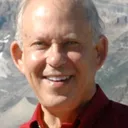Stay in the Loop
BSR publishes on a weekly schedule, with an email newsletter every Wednesday and Thursday morning. There’s no paywall, and subscribing is always free.
Life's mysteries among the strings
Philadelphia Chamber Music Society presents the Jerusalem Quartet

A few decades ago, the presence of a great string quartet made heads turn. By contrast, today’s musical world is filled with crème-de-la-crème ensembles. They are all technically agile and musically sophisticated. What differentiates one from the other are the compositions they choose to perform and their approach to the music.
In this concert, the Jerusalem String Quartet once again proved their technical mastery. But it was their approach and understanding that made the performance memorable. Their lush, deep-throated sound and soulful interpretations — never hesitating to lean into a phrase with heartfelt passion — reminded me of the great chamber players of an earlier time: The early Juilliard Quartet, the Marlboro musicians sired by Rudolph Serkin, and legendary players like Isaac Stern and Leonard Rose.
Mystery in a broken world
The French existentialist philosopher Gabriel Marcel said we live anxiously in a broken world which we try to fix and make orderly. Some musicians and ensembles aim for total transparency, which is a noble ideal but impossible in a broken world, and virtuosity, which is impressive but unsatisfying as a fully human experience. Marcel, who was also a playwright and music critic, recognized the importance of accuracy and investigation in art, science, and life, but pointed out that we have lost touch with the mysterious aspect of our being, our full participation in lived experience that can only be expressed through emotion. This is the element the Jerusalem Quartet did not hesitate to pursue.
Haydn’s serenity
The quartet’s choice of compositions illustrated this emotional approach. For openers they chose the Haydn Quartet in D Major, Op. 64, No. 5, the “Lark.” In his later years, Haydn followed his sturm-und-drang period with lyrical music suited as much for the salon as the court, and presaging the song-based approach of Franz Schubert. Likewise, the Jerusalem Quartet emphasized lyrical resonance over the brooding sections to be found in all three pieces in the program.
Violinist Alexander Pavlovsky sounded much like Isaac Stern as he gave rich sonority to the melody that has been compared, if only in its beauty, with a song of a lark. The ensemble, guided by the rhythmic pulses of Kyril Zlotnikov’s cello, emphasized the sweet, gestural intentions of Haydn, engaging the third movement in luscious interchanges between the instruments. Throughout, the quartet’s emphasis was not on emotional turmoil but upon the stream of feeling inherent in the flow of the music.
Russian passion meets U.S. pragmatism
Prokofiev composed his Quartet No. 1 in 1930 while on tour in the United States. It begins with a movement that propels forward rhythmically, perhaps like one of the trains that took him from city to city. The second movement consists of a brooding introduction followed by a brisk dialogue. The third and final movement has a dance-like beginning that leads up to a broad-brush pastoral landscape mixed with echoes of personal conflict, perhaps mirroring Chekhov’s dramatic settings of a troubled aristocracy in their country estates. This compact piece contains the complex features of Prokofiev’s larger works, yet is plain enough that the Jerusalem Quartet didn’t need to “fix” it as much as give coherence to its emotional changes.
Nervous splendor

These two relatively straightforward and manageable string quartets served as a prelude to a work of enormous complexity and scope: Beethoven’s first Razumovsky Quartet. Commissioned by the Russian ambassador to Vienna, it contains a Russian folk motif, but is otherwise strictly Viennese in its “nervous splendor,” a phrase coined by historian Frederic Morton to describe the soul of that city. By the time these quartets were completed, Beethoven’s daring excursions into unusual key modulations and experimentation with sequences of sections and movements were in full force.
The “fix it” musicians often emphasize Beethoven’s innovations, too often giving the piece the sense of reversals and changes later to abound in the work of Gustav Mahler (Beethoven’s dedication of the adagio third movement to his deceased brother often leads to a comparison to Mahler’s Kindertotenlieder, which is unfair to both composers.) By contrast, the Jerusalem Quartet emphasized the remarkable coherence of the whole given its keys and sections that often seem like pastiche. The miracle of this composition, indeed, that of so much of Beethoven’s music, is the mysterious way he made it all come together. By going with the flow with passionate expression, these musicians were able to convey the sense of a higher purpose embodied in the Heiligenstadt Testament, the posthumously discovered letter in which Beethoven stated that fulfilling his artistic destiny was the only way he could recover from his then overwhelming remorse, ills, and dilemmas.
Some of the young people among us may prefer the current digitalization and manipulation of all things great and small. But for me, the Jerusalem Quartet proved that emotions, story, and mysteries are still with us, and doing fine.
What, When, Where
Jerusalem String Quartet. Haydn. Quartet in D Major, Op. 64, No. 5, Hob. III:63, Lark; Prokofiev. Quartet No. 1; Beethoven. Quartet in F Major, Op. 59, No. 1, Razumovsky. Alexander Pavlovsky, Sergei Bresler, Ori Kam, Kyril Zlotnikov. Philadelphia Chamber Music Society. October 21, 2016 at the Perelman Theater, Kimmel Center, 300 S. Broad Street, Philadelphia. (215) 569-8080 or pcmsconcerts.org.
Sign up for our newsletter
All of the week's new articles, all in one place. Sign up for the free weekly BSR newsletters, and don't miss a conversation.

 Victor L. Schermer
Victor L. Schermer